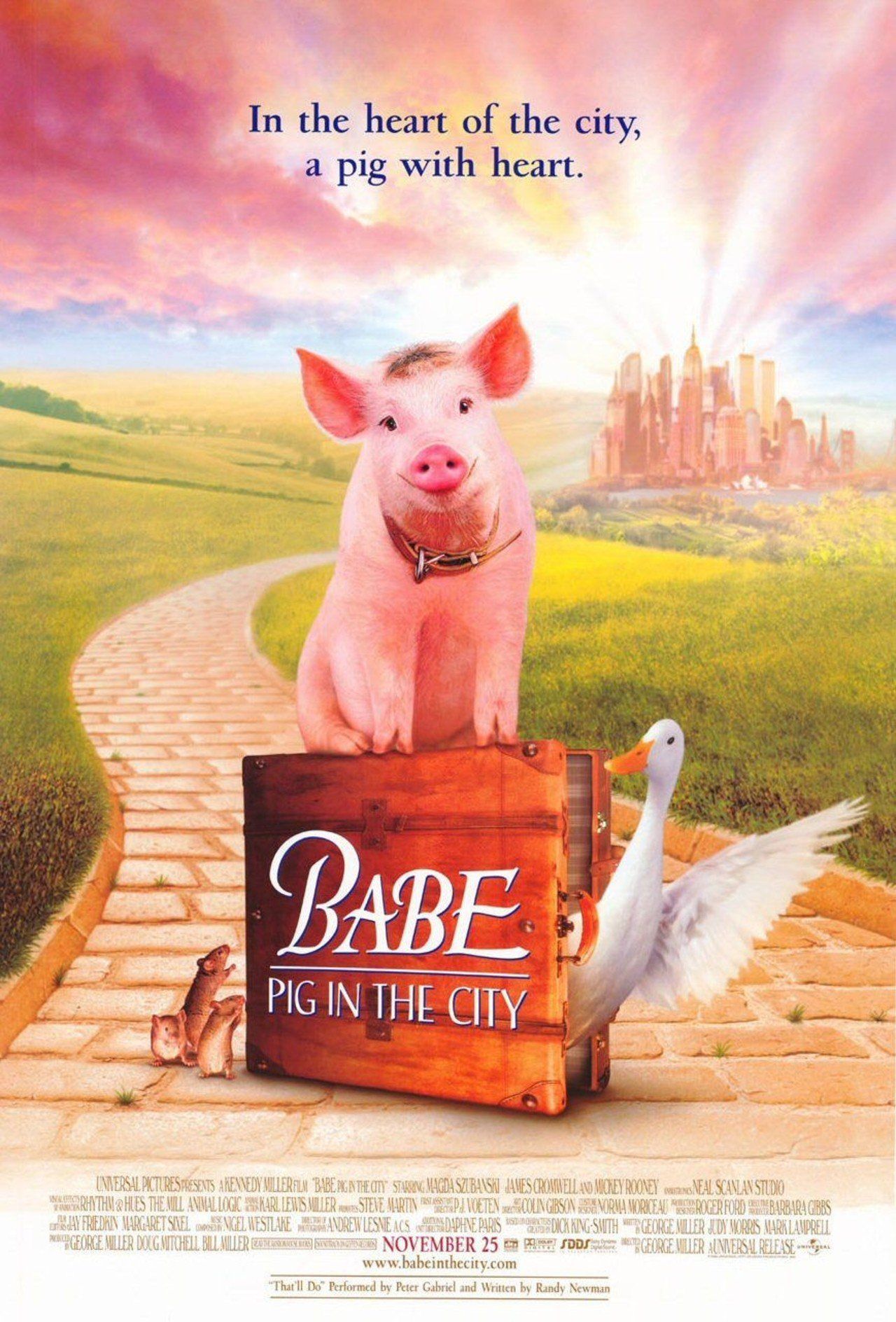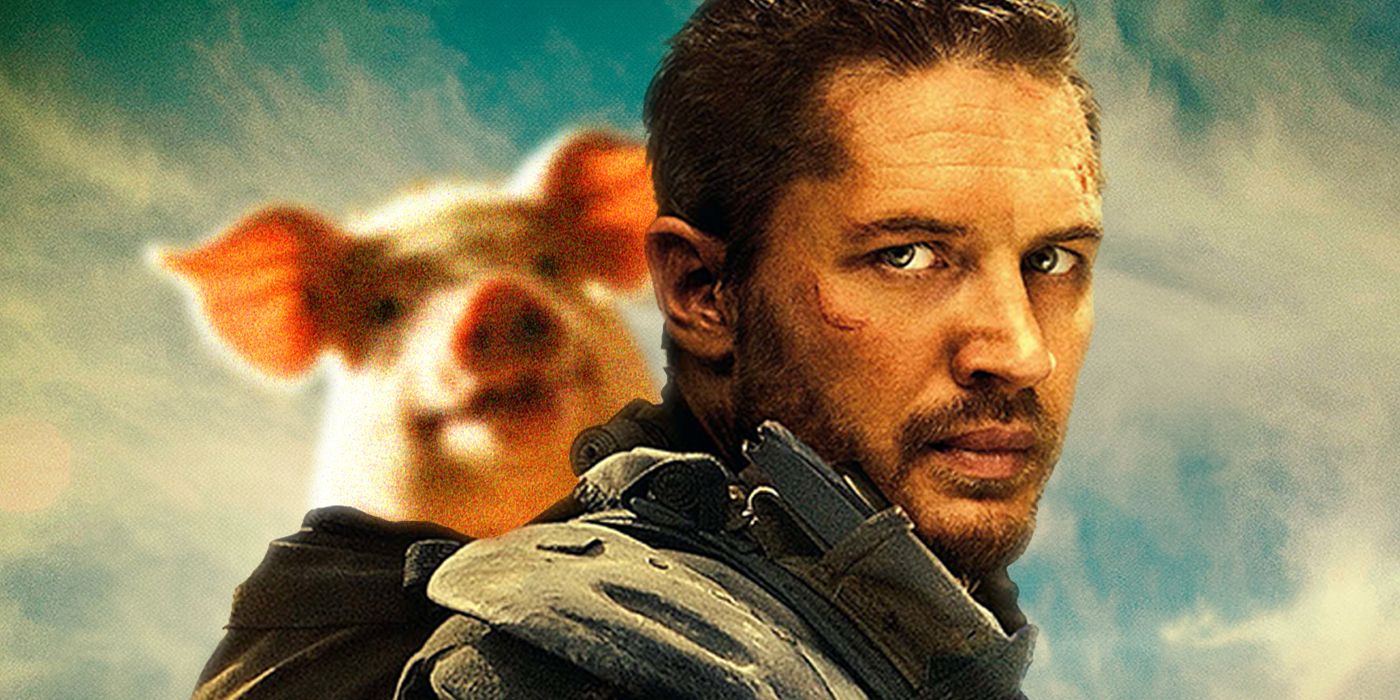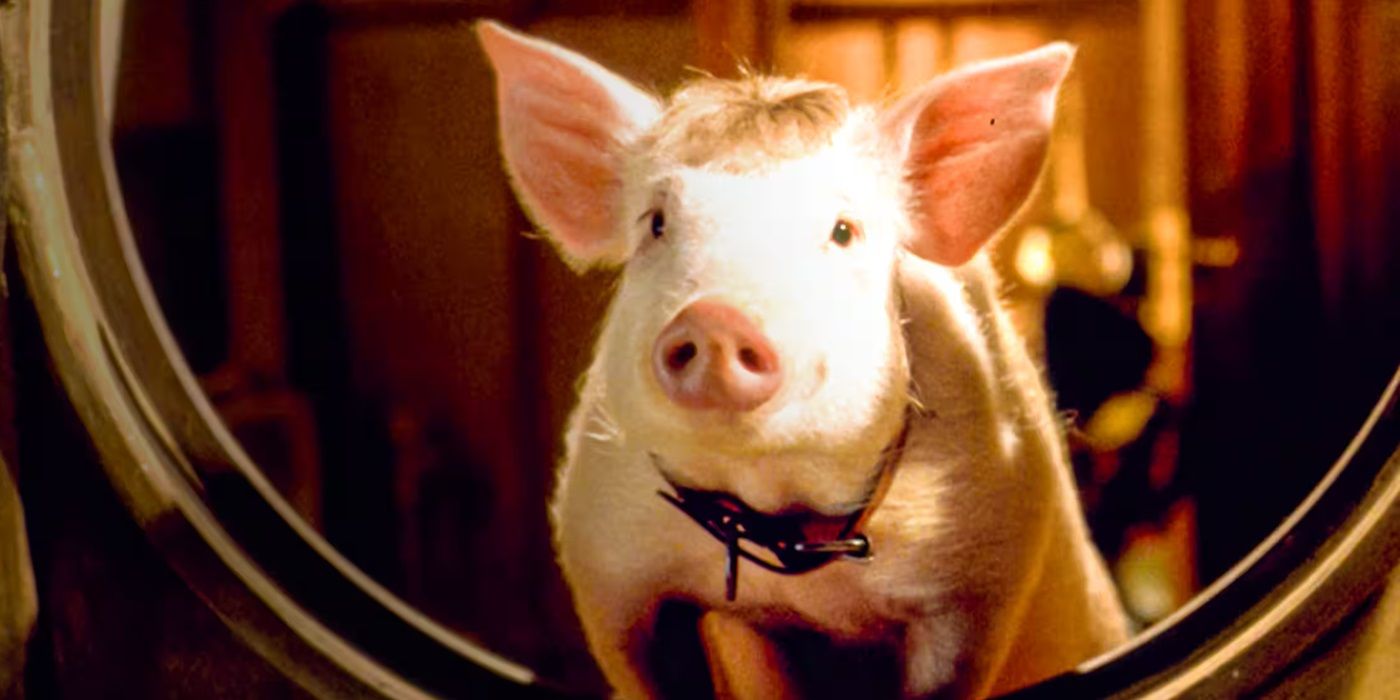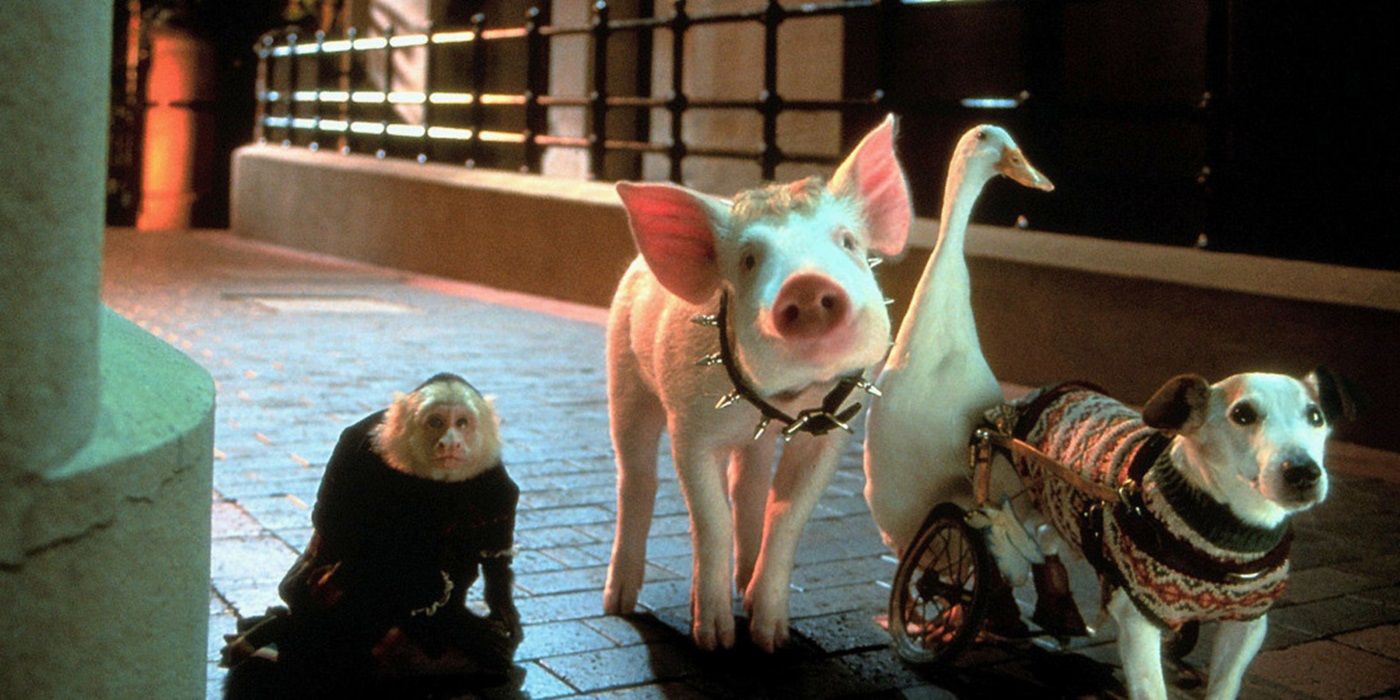The Big Picture
- Babe: Pig in the City offers a dark and mature take on the adventures of Babe, showcasing themes of poverty, authority, and unlikely heroism.
- The film's animal characters are dignified and complex, leading to emotional impact and meaningful life lessons throughout the narrative.
- With its imaginative world-building and impressive set design, Babe: Pig in the City delivers a fabulous adventure for all ages.
That George Miller might forever be most known for having created the invariably great Mad Max universe is understandable: it’s a great piece of post-apocalyptic fiction, with imagery that’s since become nothing short of canonical. Still, one of Miller’s greatest works is too often undervalued, and while it shares the same sort of frenzied kinetic energy as the Mad Max films, it couldn’t otherwise be further from Miller’s famous franchise. The film in question? Babe: Pig in the City. A sequel to the nearly-perfect family film, Pig in the City furthers the adventures of the titular porcine Babe (E.G. Daily) as he unwittingly leaves the farm behind for a much more ambitious odyssey. Everything that made the original film feel warm and homey is abandoned for outright chaos and insanity.
After a brutal workplace accident, Babe's Farmer (James Cromwell) is incapacitated and unable to earn. Ghoulish men clad in black –gasp! Bankers! – come to collect, putting the farm in jeopardy. Inspired by Babe's newfound fame as a world-class sheepherder, Mrs. Hoggett (Magda Szubanski) brainstorms the idea to enter the pig in another herding contest to win enough money to dig the farm out of debt. Except things go horribly wrong, and Babe and Mrs. Hoggett become stranded in a sprawling metropolis with no certain way home. Once Mrs. Hoggett gets arrested by bureaucratic thugs, Babe is left in a towering hotel inhabited by a colorful cast of monkeys, dogs, cats, and mice. Here, Miller crafts a weird little movie about bravery, kindness, and the ongoing fight against cold and faceless authority figures. What could have made for an utterly forgettable follow-up to a lovable family film became something so much more: a sequel that surpasses its predecessor and a crowning achievement in Miller’s filmography.

Babe: Pig in the City (1998)
After a series of unfortunate events, a small pig embarks on a daring mission in a vast city to secure the future of his beloved farm. Alongside a menagerie of urban animal outcasts, he faces unexpected dangers but proves that even the unlikeliest hero can inspire a world of hope and friendship.
- Release Date
- November 25, 1998
- Director
- George Miller
- Cast
- Magda Szubanski , Elizabeth Daily , Mickey Rooney , James Cromwell , Mary Stein , Danny Mann , Glenne Headly , Steven Wright
- Runtime
- 97 Minutes
- Main Genre
- Adventure
- Writers
- George Miller , Judy Morris , Mark Lamprell , Dick King-Smith
- Studio
- Universal Pictures
'Babe: Pig in the City' Is a (Mostly) Family-Friendly Delight
Compared to the death-filed chaos of the Thunderdome, Pig in the City feels like Disneyland. Still, while Pig in the City is largely friendly for moviegoers of all ages, it's not without its moments of harsh darkness. Starting with the lighthearted aspects, the film, following the cutest troupe of animals you'll ever see, establishes an expressive, playful tone that keeps the narrative throttling forward at a breakneck pace. Focusing so heavily on these animals helps make the movie so accessible for families. What Babe: Pig in the City understands is that it doesn't need to introduce human narratives to tell an engaging tale. Its animal characters do that on their own, and the film is better with them remaining the center of the story. They're interesting characters that aren't diluted to cartoonish figures. Talking chimpanzees (with mouths manipulated with CGI to birth the illusion of actual speaking) are given the proper dignity they deserve. A well-dressed orangutan named Thelonius (James Cosmo) seems to have a brewing dissatisfaction for his place in the hierarchy of the animal kingdom, simultaneously keeping a contempt for humans and a desire to join them. A wheelchair-bound Jack Russel terrier (played by Miller's own pup) named Flealick (Adam Goldberg) is a motor-mouthed pipsqueak whose bite matches his fierce bark. A chimp voiced with utter perfection by Stephen Wright offers brooding and cynical quips about the state of things.
That these non-human characters are given dignity makes for all the greater heartbreak when things go awry. A scene at the end of the second act, in which the carefully-constructed sanctuary the animals share quickly comes crumbling down, is as emotionally impactful as such a scene could be. Miller throws in a handful of gags, as the movie is never without them for more than a few minutes, but the scene is played as a genuine tragedy. And it is, thanks in part to the flawless humanization of the characters and the believability of the special effects – along with the tragic tone, set by composer Nigel Westlake's swelling score, and Miller's knack for filming action sequences. However, what's initially shocking about Babe: Pig in the City, though, is the dark lengths the movie goes to.
'Babe: Pig in the City' Isn't Afraid of Taking on Darker Themes
To start with, an overarching theme of Pig in the City is how poverty and the imposing threat of imprisonment from authoritative figures creates divide. When the benevolent owners of the hotel Babe and company stay at unexpctedly leave the animals, the threat of starvation loom overhead. The family of chimpanzees, including Bob (Wright) and his pregnant wife Zootie (Glenne Headly) exploit Babe to serve as a distraction for a simple jelly bean heist, putting the pig's life in danger. A Bull Terrier (Stanley Ralph Ross) that guards the joint sets out for blood, chasing Babe in an immaculately-shot chase sequence that runs throughout the city. It's something genuinely horrifying, like a chase scene torn from a horror film. Cornered and facing an untimely demise, Babe stares his attacker in the eyes and merely utters the word "why?". It's a moment of existential anguish certain to still your heart.
The darkness continues as the Bull Terrier, blindly raging with his genetic instinct to kill, is hung from a bridge and nearly drowned. Later, Flealick is dragged from behind a speeding van, crashes his wheelchair in a crumpled heap, and is temporarily sent to Doggy Heaven where he's regained the use of his hind legs to playfully chase butterflies. Spoiler Alert: he's called back to earth by Babe, delaying, however briefly, the inevitable. It's moments like these that make Pig in the City seem like a harsh and unfriendly reality, one far too full of anguish and dread to be deemed appropriate for kids. Which would remain true if it wasn't for Babe's unrelenting optimism, his dedication to doing what's right. Babe, a hero we can all strive to be more like, brings the darkness into light. He cares for others not because he wants something in return but because he knows, somewhere in his tiny little heart, that it's what he should do.
George Miller's Babe Sequel Teaches Wholesome Life Lessons
Like all of the greatest children-friendly movies, Pig in the City teaches its audiences of all ages some crucial life lessons. The first Babe film taught the difference one person, no matter how small, can make in the world. The second fleshes that idea further, showing how any individual can stand up against authority or bigotry in the name of kindness and equality. After the farmer's near-death experience, a guilt-ridden Babe is told, "you can't undo what happened...you can only make up for it", and it's a lesson the pig takes to heart. Things inevitably go wrong throughout the narrative, and while Babe occasionally questions his role in the misfortunes, he chooses not to dwell on the past, instead looking towards the future for ways to make a change.
When the entire hotel of animals (besides Flealick and Babe) get arrested by sadistic animal control officers (dressed in imposing all-black outfits), Babe feels guilt for his inability to prevent the tragedy. It becomes a moment for the little guy to become a hero, to spring his buddies out of jail and prove to them once and for all that all animals are created equal and that his petite stature doesn't make him any less of a champion. When the groups of cats and dogs remain locked in a centuries-long contemptuous conflict between species, Babe offers a simple solution: just get along. What seems like an oversimplification is actually a novel insight; why can't they just get along? The problems they face are identical. The war they're fighting is the same. It's only through union and equality that any solution can truly be discovered.
The 'Babe' Sequel Is Surprisingly Grounded in Reality
For a children-friendly film, Pig in the City surprisingly showcases utter contempt for filthy late-stage capitalists and other figures of authority. The sanctuary built for all animals, while far from utopic, operates on a simple fundamental idea that food and shelter is a right for all living things to be distributed equally. It works, at least kind of, and while the bounty of jelly beans isn't enough to ward off starvation for even the smallest members of the community, the concept remains plausible. Earlier, when the chimps and Babe still had a paying gig performing circus acts for patients in a children's hospital, Babe aches for his check in order to pay for a plane ticket home. In the middle of his first performance, Babe pops his head up to inquire when he's getting paid. The little guy know his worth and doesn't play around.
The police system portrayed in the movie feels impenetrable and calculating to an ignorant Miss Hoggett, but her insistence on being heard and standing up for justice pays off. The animal control officers seem at first to be unconquerable figures of authority but Babe, brave and defiant of this unjust status quo, topples it all onto its head by rescuing his friends from wrongful imprisonment. It's a movie about standing up for what's right, however intimidating the fight may seem, being generous to those in need, caring for others, regardless of any differences that might exist.
George Miller Fashions a Fabulous World With 'Babe: Pig in the City'
If Pig in the City shares DNA with Mad Max the most obvious resemblance is their mutually boundless imagination. Like the fantastic Aussie wastelands, Babe's world is fully realized. It's impressive how this seemingly little Babe sequel exudes such evident passion for the craft. The seams between the animatronics and the real live animals are largely invisible. Sure, there are certain instances – such as the newborn chimps, for one – in which cracks in the illusion show, but these are few and far in between, especially considering the era in which the movie was made. It's a damn good-looking film.
If the first Babe film revolutionized the talking animal picture, Pig in the City pushes it to imaginative new heights. The live animal acting is among the greatest ever committed to film, alongside the Oscar-bound Rin Tin Tin or Anantomy of a Fall's canine superstar Messi. Miller makes it all work flawlessly with a talented crew of animal trainers, all while retaining an applaudably humane film shoot during which no animals were harmed in any manner. The orangutan was accompanied by his sister to prevent loneliness, and all the dogs featured were adopted by the cast and crew.
There's no talking about Pig in the City without gushing over its set design. The movie deserves to be mentioned alongside The Wizard of Oz and Metropolis for the way it utilizes its magnificent sets to create an elaborate world to live in. The way Miller captures the city is pure hyperbole: Imagine Homeward Bound as written by Hunter S. Thompson, a gonzo portrayal of a sprawling urban jungle viewed through the eyes of an outsider. It's a little Venice, a little Paris. One neighborhood is distinctively Beverly Hills, while another might be Manhattan. There's a distinct peculiarity to it all, and there's a reason: the film's all shown through Babe's eyes, and these are eyes of a modest little country boy. To him the city is impressive, even imposing. It's a sprawling landscape of unfamiliar sights – of glass, concrete, and stone. As he looks all lonesomely out the hotel window at the vast and inhuman landscape that stretches out before him, Babe aches with a sense of alienation. He's just so far from home and all of its comforts. Which is why this little bit of fantastic world-building means so much more: there's a thematic reason behind Miller making the city appear so extreme.

George Miller Says He Has Ideas for Another 'Mad Max: Fury Road' Prequel
The story was conceived alongside 'Furiosa' to flesh out the world of the 2015 hit.The interiors are set up with an equal measure of care. It's almost Burton-esque, though some shots of inhumane bureaucratic interiors feel like something out of Jacques Tati or Terry Gilliam. It's a film so fully realized and intricately built that it's almost impossible to forget that it's not animated. What Miller and his talented crew created with Babe: Pig in the City is a product of unrivaled creativity and imagination, a product of artistic achievement that few films of its ilk could hope to challenge. The previously mentioned chase scene through the city is as immersive as it gets, with the dog and pig winding through labyrinthine alleyways and sidestreets that bring the metropolis to life. It's a set that you can disappear into, so real you can almost touch it. As evidenced with the Mad Max franchise, Miller has gone on to perfect this craft, continually expanding an intricately built world which feels palpable and lived in.
By the time its credits roll and all threats are conquered, Babe: Pig in the City leaves one with the feeling of having went on a fabulous adventure with some endearing friends. While Mad Max is a series largely about the cruel instincts of humans in the wake of an apocalypse, Pig in the City is an uplifting allegory for the omnipresent urgency of kindness.
Babe: Pig in the City is available to rent or buy on Prime Video in the U.S.



